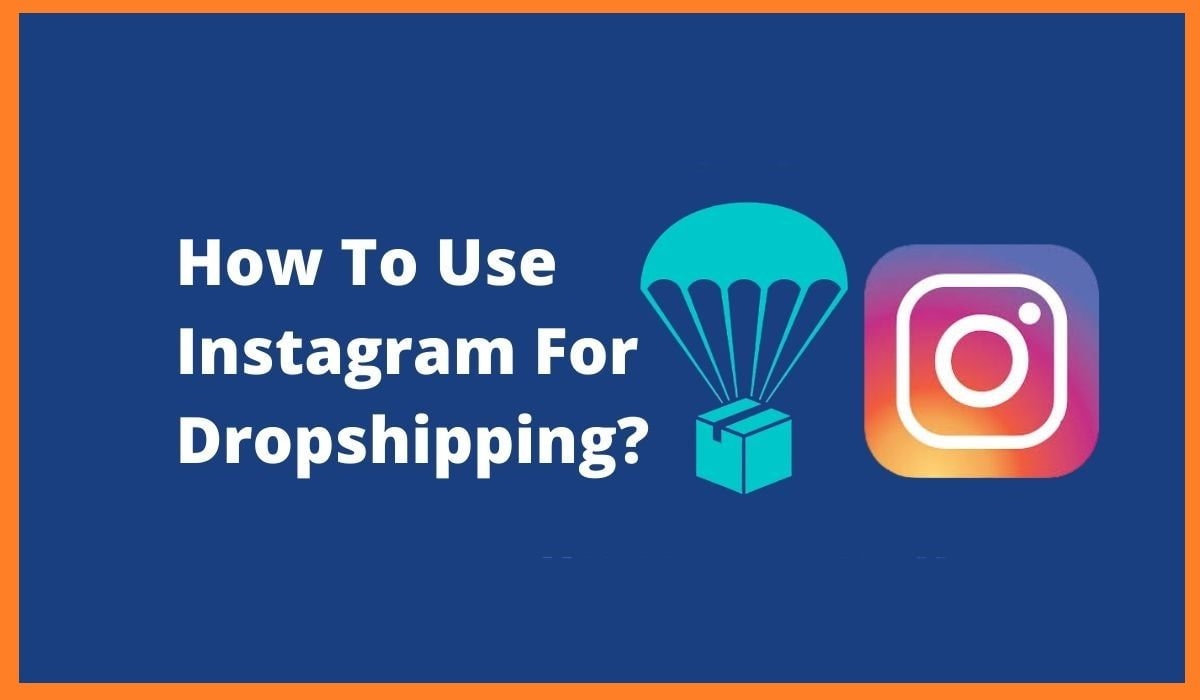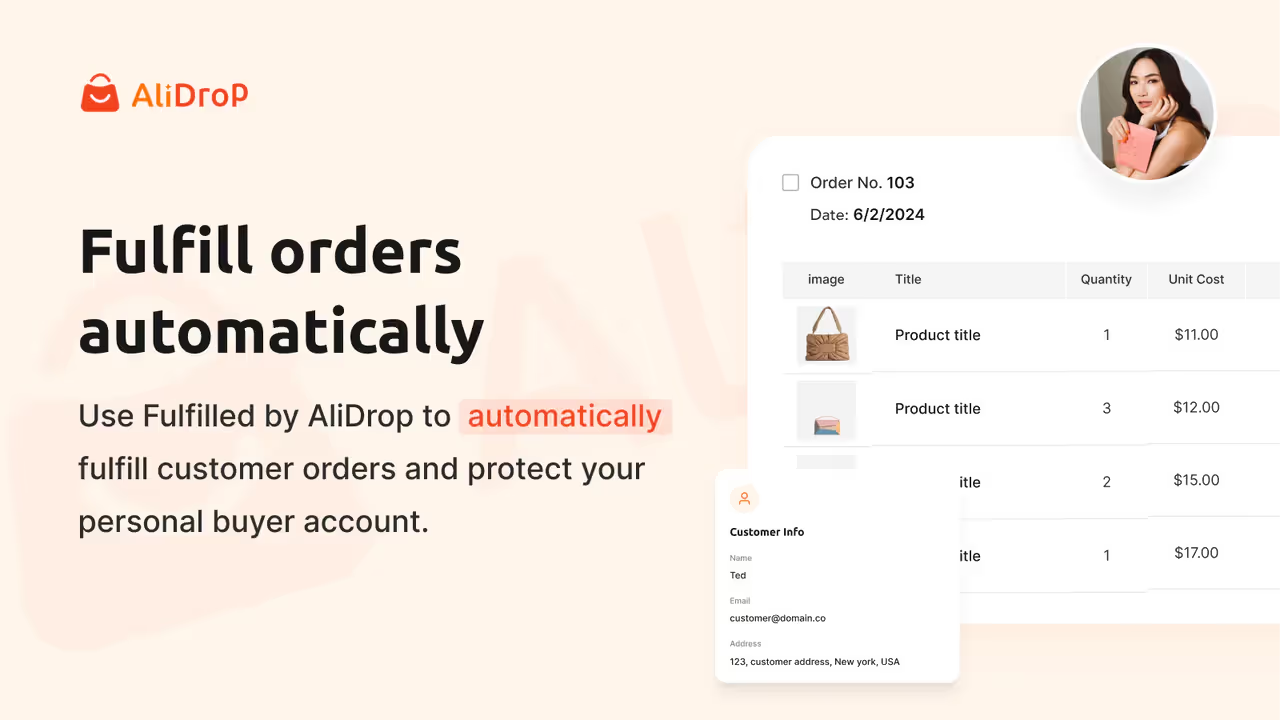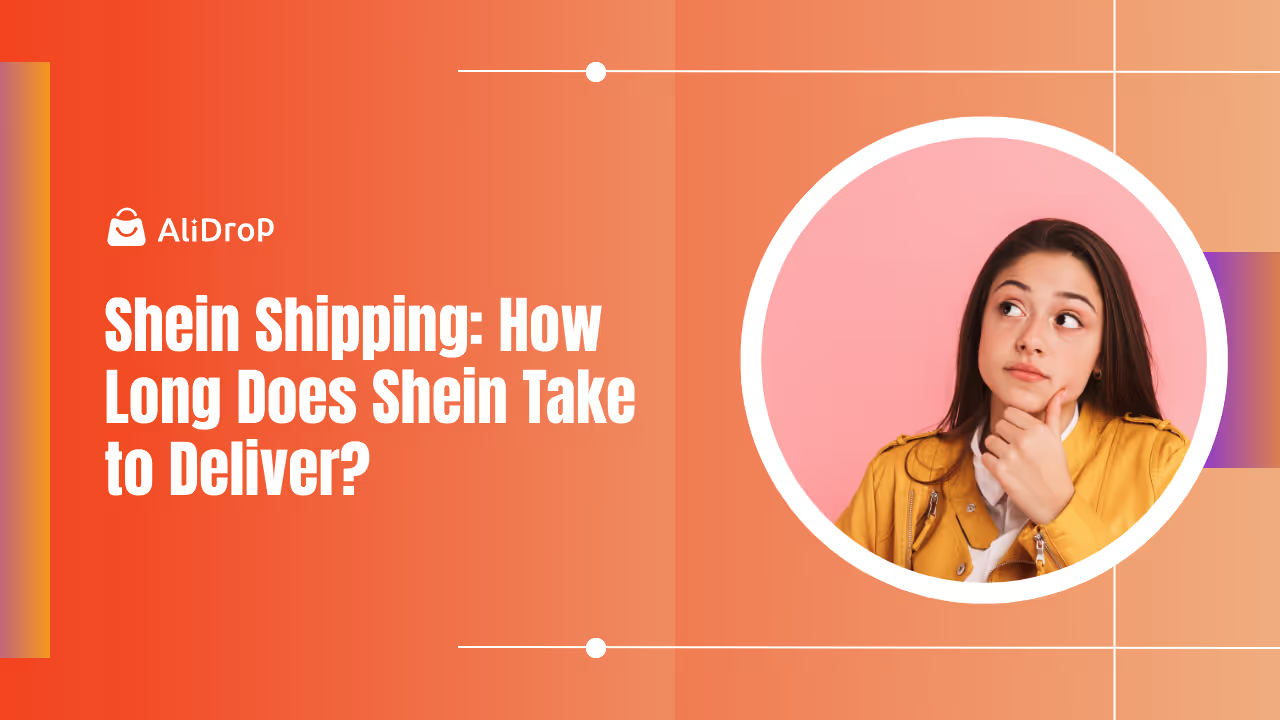Scrolling through Instagram, you’ve probably seen an aesthetic product video or a “Link in bio” call-to-action and thought—do people actually buy from these accounts? The answer is yes. And not only are people buying, but thousands are also building full-time businesses using Instagram dropshipping.
With no need to buy inventory upfront, set up a traditional website, or run expensive ads from day one, Instagram dropshipping is one of the most beginner-friendly ways to start an online business in 2025. All you need is a phone, a bit of creativity, and the right strategy to turn posts into profit.
But here’s the thing—most people jump in blind, post a few product photos, and give up when nothing sells. This guide is here to change that. We’ll walk through everything you need to build a dropshipping business on Instagram that actually works—and makes money.
What Is Instagram Dropshipping and Why It’s Trending in 2025

Suppose you're wondering why so many people are turning to Instagram for launching a dropshipping business. In that case, it's because the platform is built for visual storytelling—and that's exactly what sells products today. But Instagram dropshipping isn’t just a buzzword. It's a real, scalable model if you know how to use it right.
Let’s break down what it really means and why it's such a powerful opportunity right now.
What Instagram Dropshipping Actually Looks Like
This isn’t about flooding your feed with random product photos and hoping someone bites. Instagram dropshipping is about building a branded experience around a product—without ever touching the product yourself.
You pick a niche, showcase products on your Instagram page, and when someone buys, your supplier ships it directly to the customer. No warehouse, no upfront bulk orders, no packaging stress.
What you do handle is the marketing, content, and customer relationships. And yes, that’s where your creative edge can shine.
Why Instagram Is Built for Dropshipping Success
Instagram has evolved from a photo-sharing app to a full-blown shopping engine. Between Reels, Stories, product tags, and “Shop” tabs, the platform is constantly nudging users to discover and buy.
The best part? People want to shop on Instagram. They follow niche accounts, look for recommendations, and react well to aesthetic, story-driven product content.
If you can tap into a specific lifestyle, trend, or vibe—and match it with the right product—you can turn a casual scroll into a sale. And that’s exactly what makes Instagram dropshipping so exciting.
Choosing the Right Dropshipping Platform: What Most Newbies Get Wrong
Before you even start posting on Instagram, you need to figure out what happens after someone clicks “Buy Now.” This is where most beginners trip up. Your backend setup—the store, the supplier, the fulfillment system—has to work smoothly behind the scenes.
Let’s talk about why choosing the right dropshipping platform makes or breaks your Instagram business.
Why Instagram Dropshipping Needs a Solid Backend Setup
Instagram might be where you attract customers, but it’s not where you fulfill orders. Once someone buys, your system needs to:
- Confirm the order
- Forward it to the supplier
- Update the customer
- Handle returns or questions
If you're stuck manually entering orders or scrambling to find a product link, it’s only a matter of time before things fall apart. A good backend platform handles these processes automatically—so you can focus on content and customers, not logistics.
How AliDrop Makes Instagram-to-Store Selling Seamless

This is where AliDrop comes in. It’s one of the few dropshipping platforms that’s actually designed with automation and customization in mind.
With AliDrop, you can create a full online store that syncs with your Instagram profile, import top-selling products from AliExpress in one click, and automate everything from pricing to shipping updates.
What makes it stand out? Unlike many tools that charge you monthly, AliDrop gives you lifetime access. That means lower overheads and more control—ideal for creators, side hustlers, and niche brand builders.
You can also build a custom store with AliDrop’s team or use their plugin on WordPress/WooCommerce if you want to DIY. Either way, your store will be ready to run behind your Instagram content without friction.
Shopify + DSers vs. WooCommerce + AliDrop: Which Is Better?
Let’s make this easy. If you’re looking for a quick launch and prefer visual interfaces, Shopify + DSers might work. But monthly fees, app dependencies, and limited control can get overwhelming.
On the other hand, WooCommerce + AliDrop offers more flexibility, zero recurring costs, and a plugin that does most of the heavy lifting for you. You’ll need a bit more setup time—but you’ll own your store completely.
If you're serious about building a brand—not just a side hustle—AliDrop gives you more leverage in the long run.
How to Find Viral Products for Instagram Dropshipping in 2025
You can have the best Instagram aesthetic in the world, but if your product doesn’t spark interest in two seconds flat—no one’s buying. Finding the right product is what separates winning stores from abandoned accounts.
Here’s how to spot products that actually catch fire on Instagram—and how to use smart tools (including AliDrop) to bring them to your store fast.
Use Instagram Trends, Reels, and Hashtags as Product Discovery Tools
Your audience already tells you what they want—you just have to listen.
Start by checking trending Reels in your niche. Look at what creators are promoting, the products being unboxed, and what kind of content is getting saved and shared. Instagram’s Explore tab is your best friend here.
Next, dig into hashtags. Try niche-specific ones like #homeofficefinds or #glowupkit and note which posts have high engagement. The key? Look for everyday products that solve a small problem, create a “wow” moment, or look great on camera.
If a product gets people commenting “Where did you get this?”—you’ve struck gold.
Reverse-Engineer Competitors Using AliDrop and Product Spy Tools
Once you spot a product, your next move is figuring out how to source it fast—and better. With AliDrop’s product database, you can search top-performing AliExpress items, check real-time reviews, and import products into your store instantly.
Want to go even deeper? Use tools like Minea, Dropispy, or BigSpy to see what your competitors are running as paid ads. Combine that with Instagram page research, and you’ll know:
- What’s selling
- How it’s being marketed
- What angles are working
Then use AliDrop to grab the same product (or a better version), write stronger descriptions, and launch it on your page with your own spin.
3 Product Filters That Work for Instagram Dropshipping
Not every product goes viral. Here are three filters that help you avoid duds and focus on products built for Instagram:
- Demonstration Value: It needs to show a visible benefit in under 10 seconds. Think: skincare rollers, LED lights, or cleaning tools.
- Lightweight + Low Risk: Stick to items under $30 and ideally under 500g. They’re easier to ship and don’t trigger buyer hesitation.
- Emotional Connection: Products that feel “giftable,” solve a relatable problem, or look aesthetically satisfying work best.
If a product checks all three boxes and fits your niche? Run with it.
Setting Up Your Instagram Store for Maximum Conversion
Now that you’ve found the right product, it’s time to turn your Instagram page into a storefront that sells—without feeling like a sales page. The way you present your brand, structure your bio, and connect your store plays a big role in whether someone clicks or scrolls past.
Let’s break down how to build an Instagram setup that not only looks good but converts.
Create a Branded Business Account (Not a Personal Account)
First things first—switch to a business or creator account. This unlocks crucial tools like Insights, product tagging, and ad creation. It also shows your audience you’re serious, not just running a personal page.
Choose a clean, memorable username (avoid underscores or random numbers), and make sure it aligns with your niche. If you’re selling cozy home products, your handle should reflect that vibe—not sound like a generic dropshipper.
Craft a Winning Bio: Value + CTA + Link-in-Bio
Your Instagram bio is prime real estate. You’ve got 150 characters to answer three questions:
- What do you sell?
- Why should I care?
- Where do I go to buy it?
Example:
✨ Eco-Friendly Kitchen Must-Haves
📦 Free Shipping Over $30
🛒 Shop Now ↓
Use emojis to add personality, and most importantly, include a clear call-to-action. Then use a link-in-bio tool like Linktree, Koji, or Beacons to direct users to your store, product page, or bundle offer.
Setup Your Store with AliDrop or Shopify

If you’re using AliDrop, your store setup is already halfway done. You can either build your own store using their WordPress plugin or let their team build a custom store tailored to your niche. Then link that store directly to your Instagram bio.
Want to keep things simple? Start with a one-product store using AliDrop’s theme and highlight just one item that solves a problem. As you grow, you can expand your product range.
For Shopify users, create a clean, mobile-first store and integrate Facebook & Instagram sales channels to enable product tagging directly in posts.
Store Design Tips to Match Instagram Vibes
People expect the same vibe across your content and your store. That means:
- Use high-quality lifestyle images, not just supplier mockups
- Stick to 2–3 brand colors that match your Instagram palette
- Keep navigation simple—ideally no more than 5 main menu items
- Feature real reviews, short descriptions, and one clear CTA per page
Bonus tip: Use UGC (user-generated content) from Instagram as social proof on your store. It builds trust and looks great.
Content Strategy That Actually Converts (Not Just Gets Likes)
You’ve got your store. You’ve got your product. Now it’s time to post. But here's the catch: likes don’t pay the bills—sales do.
To win at Instagram dropshipping, your content can’t just be “nice to look at.” It has to hook attention, build trust, and push people toward buying. Let’s unpack how to do that without sounding like a walking ad.
How Instagram Reels Beat Ads for Dropshipping ROI
Reels are the new king of organic reach. Unlike ads, Reels can go viral with zero spend—if you know how to structure them.
Start strong with a scroll-stopping visual. Within the first 2 seconds, show either the problem the product solves or the after-effect (like glowing skin or a decluttered space). Keep it short, 15–30 seconds max.
Use trending sounds when relevant, but don’t rely on them. What really works is showing transformation—before/after, demo-in-action, or unpackaging moments.
End every Reel with a soft CTA: “Link in bio,” “Shop now,” or even “DM for the link.” Make it feel natural, not salesy.
Story Highlights & Shoppable Posts Setup
Instagram Stories are where trust is built. They’re casual, low-pressure, and perfect for behind-the-scenes content.
Set up Story Highlights to act like your storefront windows:
- “How It Works” → walk through the order process
- “FAQs” → handle common objections
- “Reviews” → show real customer love
- “Shipping Info” → be upfront about delivery
Once your Meta account is approved, you can also tag products directly in Stories and posts. It makes the buying journey frictionless.
Pro tip: Don’t post only products. Share packing videos, user reviews, or even a poll asking “Which version do you like better?”—all of this builds engagement and soft-sells without pressure.
Weekly Posting Schedule That Balances Selling and Engagement
Not every post should say “Buy this.” You’re building a brand, not just pushing products.
Here’s a simple weekly plan to keep your content balanced:
- Monday: Reels – show the product solving a real problem
- Wednesday: Carousel – mix of UGC, benefits, and lifestyle shots
- Friday: Story offer – limited-time deal or bonus (like free shipping)
- Sunday: Engagement post – poll, “this or that,” or meme to humanize the brand
Keep captions short, emotional, and focused on benefits—not just features.
Instagram Ads for Dropshipping: A Smart Start Guide
Organic content can take you far—but if you want to grow faster or test product-market fit, Instagram ads can give you that push. The trick is knowing when to run them, how to set them up, and what to track so you’re not just burning cash.
Let’s break it down in a way that actually makes sense—even if you’ve never run an ad before.
When Should You Start Running Ads?
Not on day one. That’s the first mistake many new dropshippers make. If you haven’t tested your content or validated your product organically, you’re just gambling.
Start running ads after you’ve posted at least 10–15 pieces of content, seen some traction (likes, shares, saves), and have a working product page.
Why? Because your ads will perform better when you already know what kind of content your audience responds to. It’s easier to scale what’s already working than to guess with money.
Setting Up Your First Ad Campaign
There are two ways to advertise: Boost a post or use Meta Ads Manager. Boosting is simple but limited. If you’re serious, use Ads Manager—it gives you better targeting and control.
Here’s a simple structure to start with:
- Campaign Objective: Conversions (if you have a store) or Traffic (if testing)
- Audience: Start with interests related to your niche + Instagram engagement (custom audience)
- Placement: Stick with Instagram Reels and Stories for dropshipping—they perform better than feed posts
- Budget: Start small ($5–$10/day) and run for 3–5 days to collect real data
Use a high-performing Reel as your ad creative. Don’t make a fancy new one—just use what already works.
What to Track: ROAS, View Time, Funnel Drop-offs
Once your ad is live, don’t obsess over likes. Focus on numbers that show buyer intent.
Here’s what matters:
- Click-Through Rate (CTR): Are people curious enough to click?
- View Time: Are they watching the full Reel or dropping off early?
- Add to Cart & Initiate Checkout: Is your store doing its job?
- Return on Ad Spend (ROAS): For every $1 you spend, how much do you earn?
If you’re using AliDrop, you can track all of this through your integrated analytics and Meta Pixel setup. It helps you see which ad creatives, landing pages, and audiences are driving real sales—not just traffic.
Test one variable at a time—like changing the hook of your Reel or targeting a different audience—and let each test run long enough to get useful data.
Conclusion: Instagram Dropshipping Can Work—If You Work It Right
Instagram dropshipping isn’t some hack or shortcut to overnight success—but it is one of the most creative and low-risk ways to start a real online business in 2025. If you’re willing to learn, test, and adapt, there’s a huge opportunity waiting.
From choosing the right backend tool (like AliDrop), to building a scroll-stopping content strategy, every step plays a role in turning followers into buyers. This isn’t just about selling stuff—it’s about creating an experience people trust and want to be part of.
The best part? You don’t need a big budget, a team, or a fancy setup. Just a strong product, a clean store, and content that makes someone pause mid-scroll and say, “I need that.”
Now that you know what works—go build something that does.
FAQs About Instagram Dropshipping
What is Instagram dropshipping?
Instagram dropshipping means you promote products visually on Instagram, take orders, and let a supplier—like one from AliExpress—ship directly to the customer. You don’t hold any inventory yourself.
How do I set up Instagram dropshipping?
Start by creating a business Instagram account, connect it to an online store, and use tools like AliDrop or Shopify to sync your product listings. You can then tag products in your posts and stories.
Do I need a website to dropship on Instagram?
Yes. Instagram requires you to link to a website or product page. You can’t complete transactions directly on Instagram unless you’re approved for Instagram Shopping.
How do Instagram ads work for dropshipping?
Instagram ads allow you to target specific audiences using Reels, Stories, or carousel formats. You can run them through Meta Ads Manager to drive traffic and conversions to your store.
Is dropshipping legal and profitable?
Yes, dropshipping is legal. It can be profitable when you choose the right niche, work with reliable suppliers, and create engaging content that converts.
























